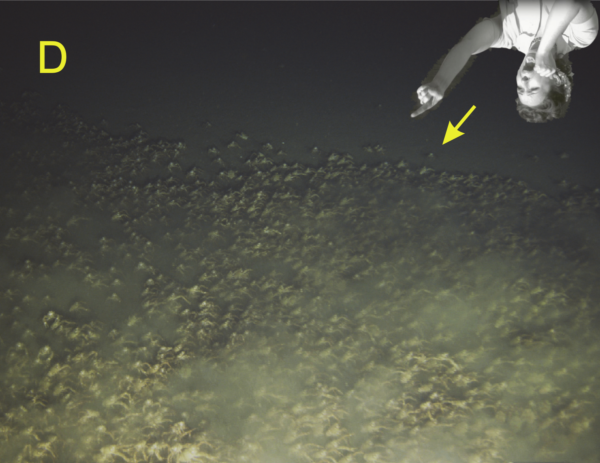
It is no secret that I find many denizens of the deep icky. Crustaceans are among them. But this video of a swarm of crabs is both beguiling and horrifying. TEEMING MASSES OF CRABS WALKING AND SWIMMING ACROSS THE SEA FLOOR.
Due to a wonderful confluence of ocean physics, seamounts are biological hotspots. Currents formed by upwelling and tides can bring deep nutrients up the slopes of these underwater mountains, and is probably what attracted the red pelagic crab, Pleuroncodes planipes, to this very location. Crabs live for the NOMS. Peak crab density is 77 crabs per square meter, roughly equivalent to having 77 one-inch sized crabs scuttling across a 4-person dining room table! Depending on how much you love seafood, this would either make or break your seafood dinner party.
The crabs also exhibited classic swarm behavior, where many animals moved together as a singular creepy mass and smaller groups of crabs merged with larger ones. Swarms may also have an important ecological function. This crab swarm stirred the benthic muck at the seafloor, creating a turbid cloud of sediment and nutrients 4-10 m high that could be used by other organisms. Be still my physical oceanography heart, but could the swarm also cause the little dips in seawater temperature and salinity near the seafloor? We can’t tell unless comparing to other swarmless casts, but it be a lot would be cooler if they did.
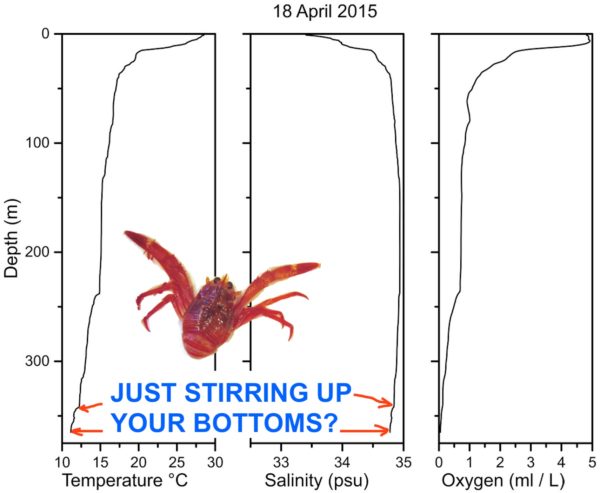
Want to know more about this crustacean chase? Check out the video below.
REFERENCES:
(2016) A crab swarm at an ecological hotspot: patchiness and population density from AUV observations at a coastal, tropical seamount. PeerJ 4:e1770https://doi.org/10.7717/peerj.1770

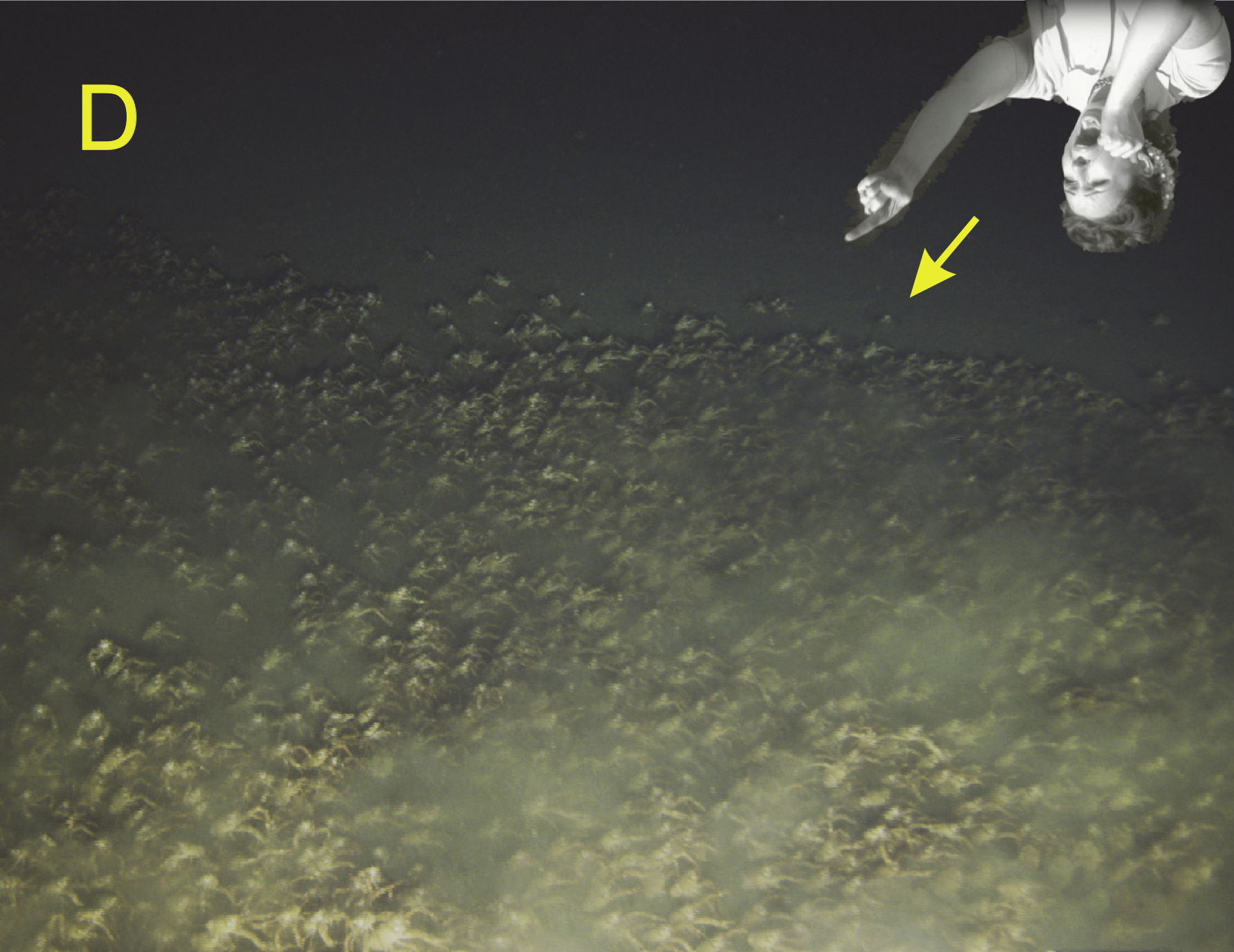
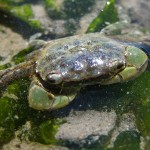
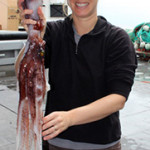


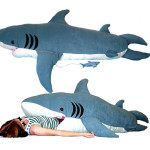
The actual CTD cast stopped about 15 m above the bottom, and unfortunately the Res Tech of the M/V Alucia was reluctant to get it closer to the bottom! Bummer… We took other casts, and we might take a look at your idea. JP
Nice! But will you have to play the “internal bore or crab” game?
I know, it is like Sophie’s choice.. Obviously, there is in internal tide moving, the oxycline up and down..
Several of the crabs are showing a swimming technique that up until now I only thought lobsters and shrimp used. I knew the crab tail still existed under the shell, but this is the first time I’ve seen it used to propel a crab backwards (though I’m sure you biologists see this all the time)
The red crab is actually a kind of squat lobster, not a “true crab” from the infraorder Brachyura (Dungeness and other celebrity crabs are in this infraorder). This is why the red crabs swim like lobsters/shrimp sometimes. As far as I know none of the Brachyuran crabs use the abdomen (lobsters tail) for locomotion.
Cool video footage of marching squat lobster clone army!
I would be curious whether they permanently reside at these extreme conditions, or regularly swim upward into the oxygenated water column to pay their O2 debt… we hypothesized this behaviour for the sister species in the Humboldt Current ecosystem, Pleuroncodes monodon (http://link.springer.com/article/10.1007/s00227-015-2709-6), which we could observe in daytime benthic videos (not nearly as high density though) and pelagic nighttime net catches, and which survived complete anoxia in incubation bottles for more than a day with drastically downregulated metabolism.
Oh my gosh. This is very cool. I am a “crab” if you go by horoscope signs, but I just really like them as a creature. Interesting little or big guys that really do a jam up job of getting eats that need eating. I however sad like to eat blue crabs. So this could be my ride or die dinner in this video. Your liking to throw expensive “s&$t” in the ocean is hilarious. Happy splashing.